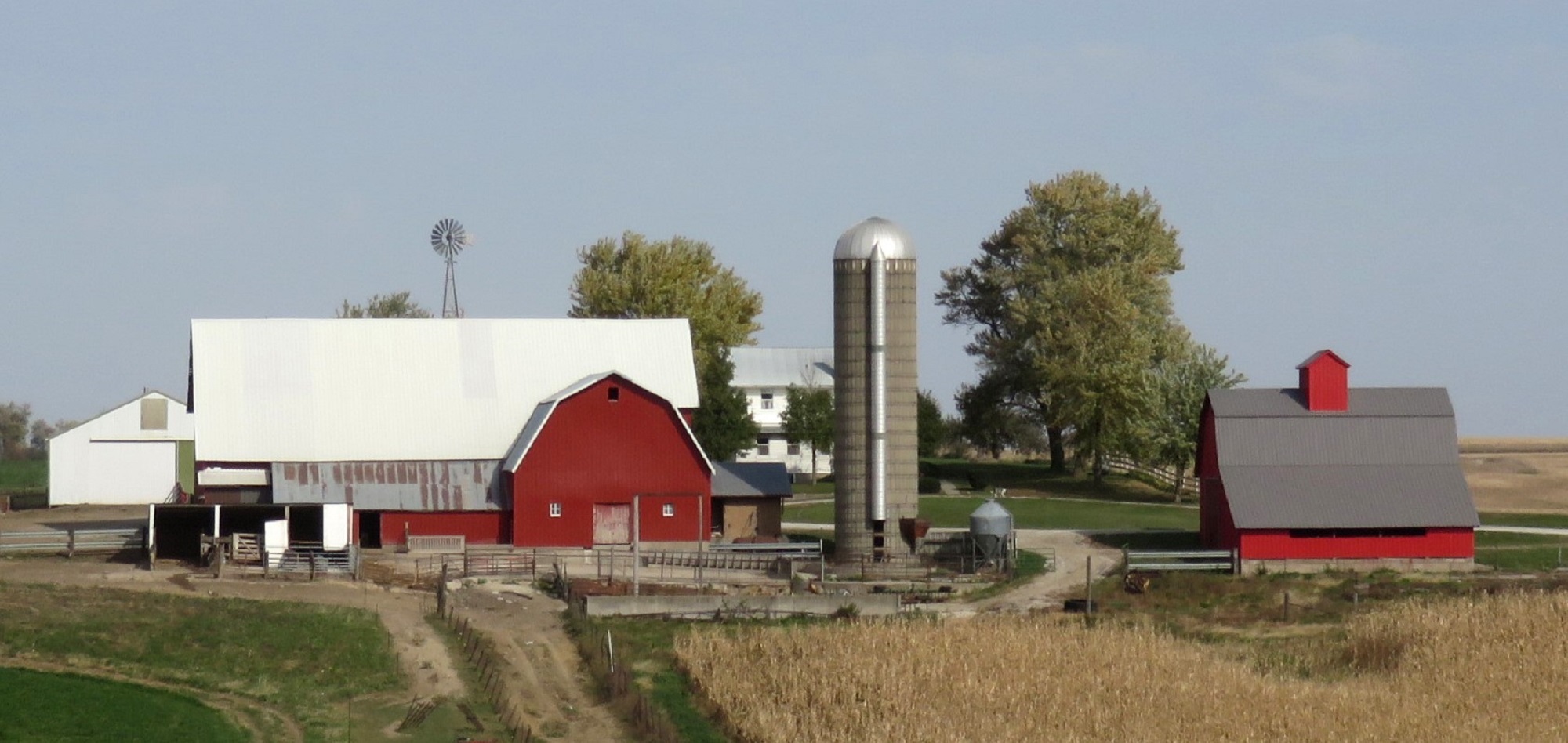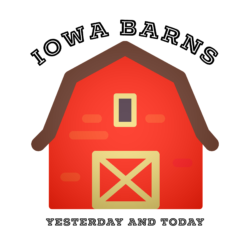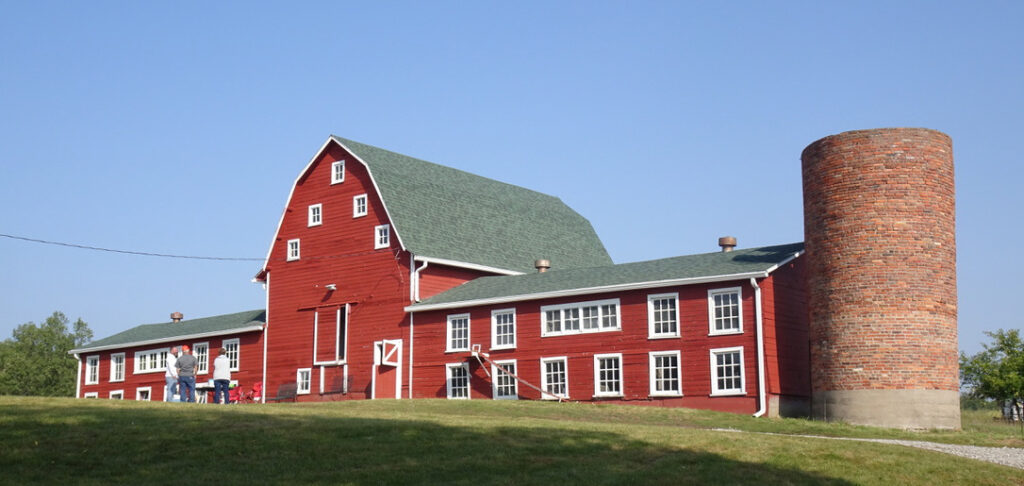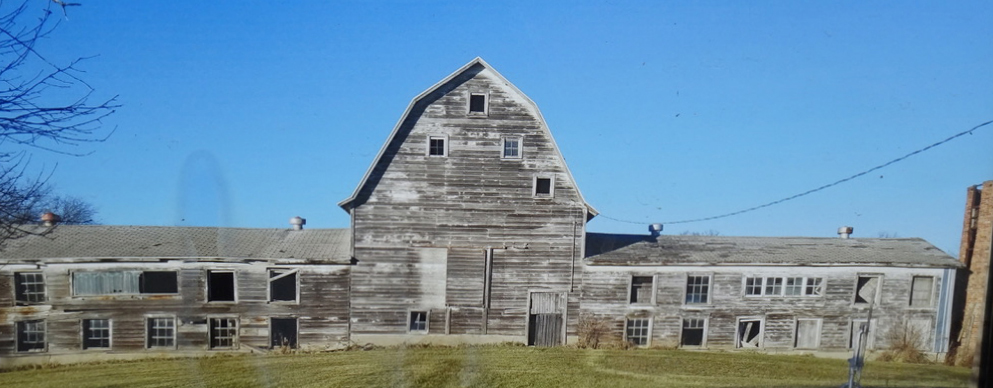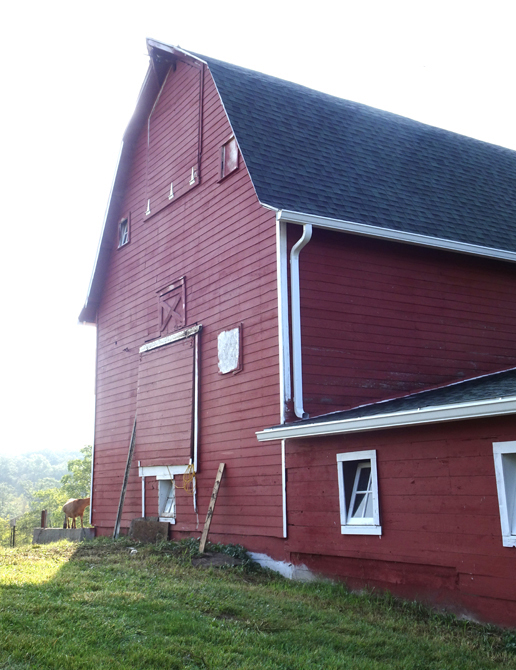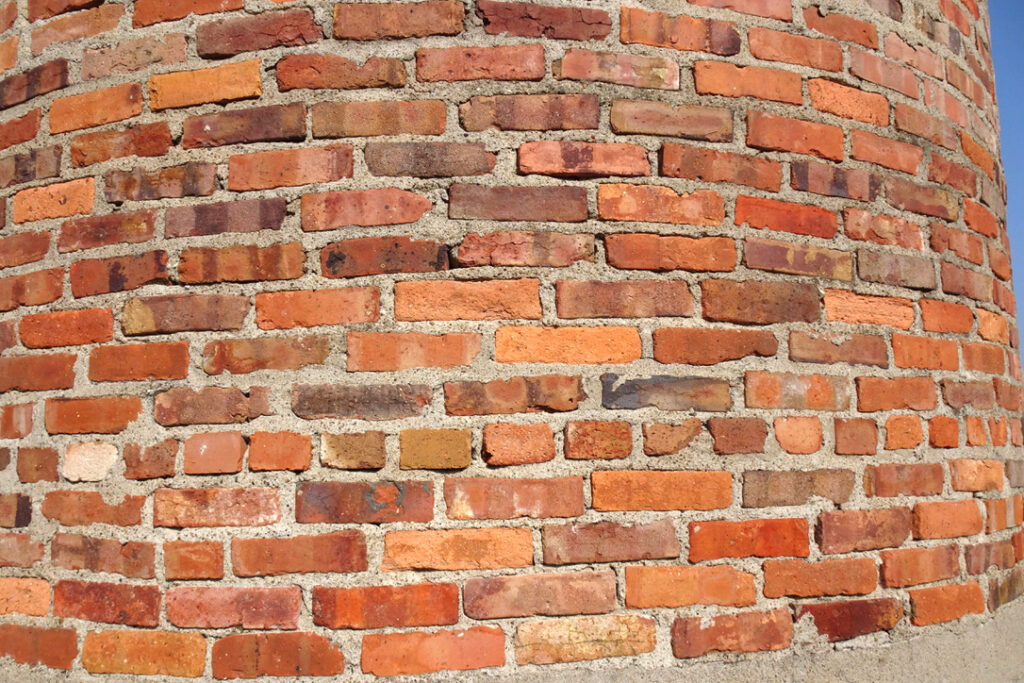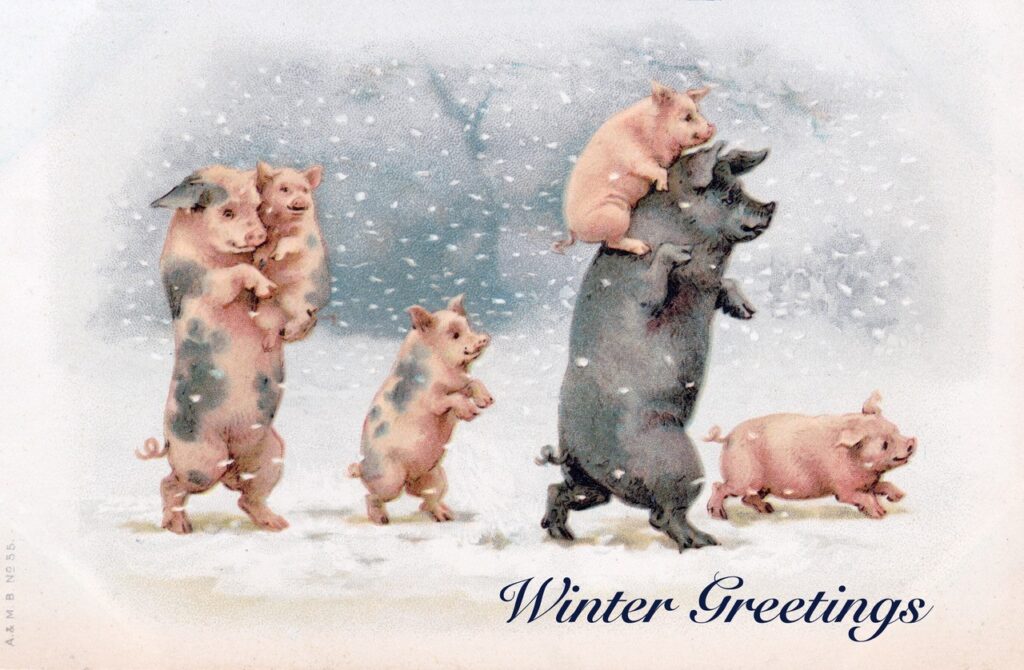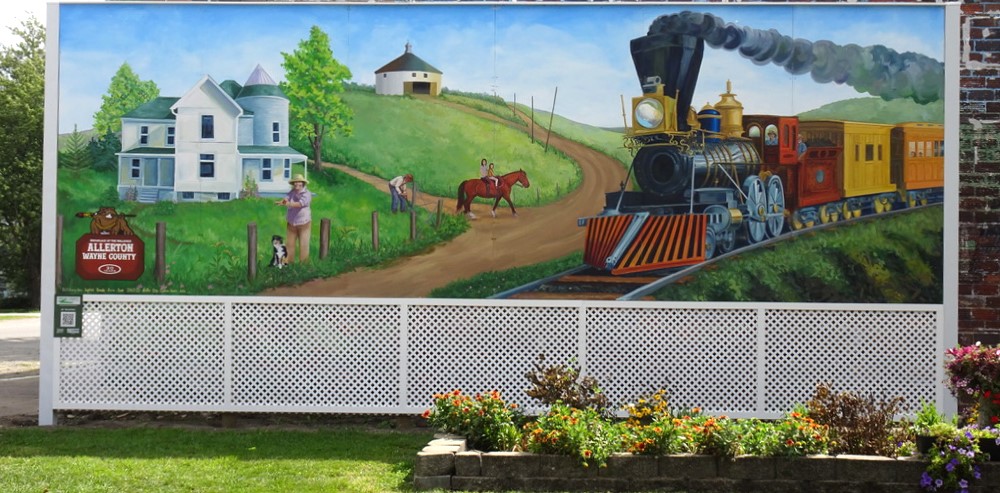
A round barn, train, and an early era home are pictured on this mural at Allerton, a small town in Wayne County platted in 1870. The train service that began in March 1871, ended in 1970, although a Union Pacific line passes through the town today.
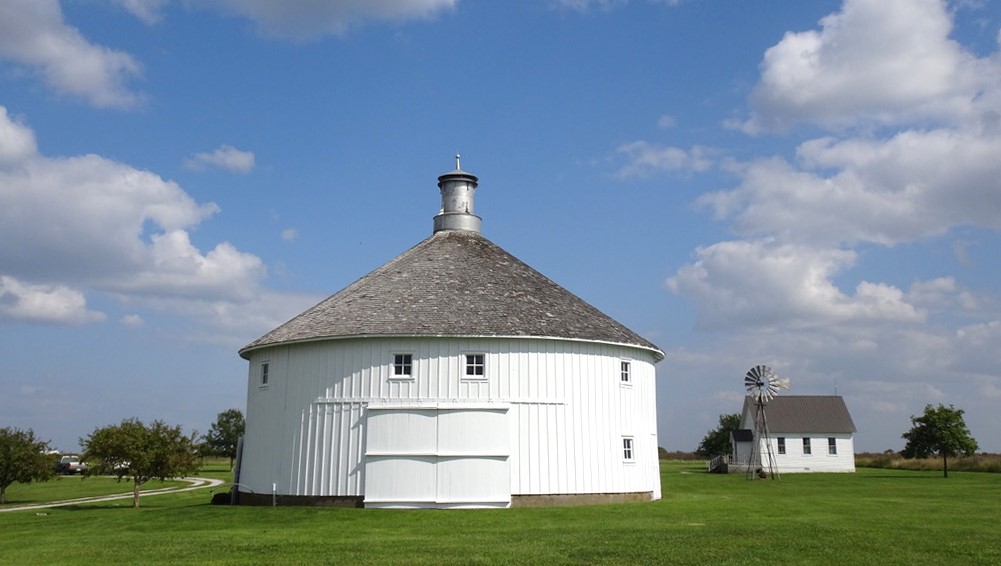
George Fennell’s 50-ft diameter board and batten round barn, pictured in the mural, was built in 1912 by Ed Nelson and was a dairy barn for eight cows. It features a spider-web design, enabling the loft to be free of support beams. It was painted white by the original owner, even though the cost of painting a barn white in early times far exceeded the cost of painting it red.
Over the years it had several owners and was the home for various livestock before the 93-acre farm was purchased by a local group intent on preserving the barn. In 1991 it became the International Center for Rural Culture and Art, Inc. On this site are the barn, as well as an 1897 Queen Anne house, 1887 church, and 1869 school. The house, church, and school were moved to the site and restored. It is a great addition to Wayne County, now used by the community for various events. Check their website for open hours in the summer.
